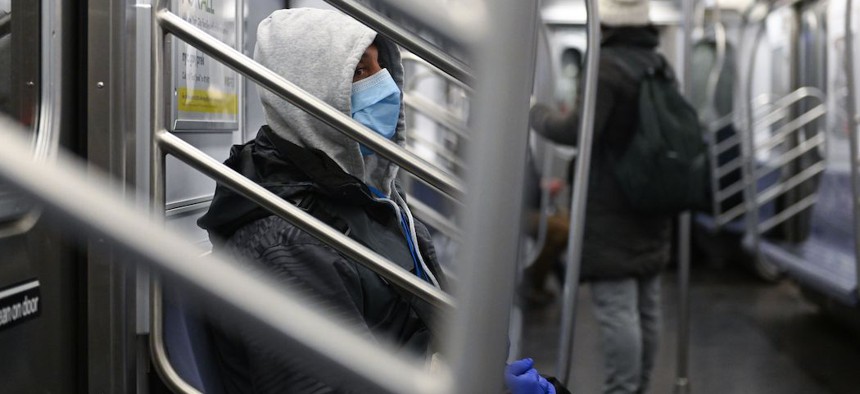MTA
The end of the un-scientific subway shutdown
Growing scientific research suggested disinfecting trains had little effect on spread of the coronavirus. Cuomo did it for a year anyway.

Ridership on the subway in New York City has plunged as the coronavirus pandemic has worsened. Erik Pendzich/Shutterstock
New York City is getting its 24-hour subway back May 17 after a one-year shutdown of overnight service by the Metropolitan Transportation Authority, Gov. Andrew Cuomo announced Monday morning. “We made significant gains,” he told reporters at a midday press conference in Manhattan. “The MTA subway trains have never been cleaner than they are now.” While Cuomo is highlighting the impending resumption of overnight service as a great triumph for state efforts to combat COVID-19 and reopen the economy, the reality of the situation has not always matched his rhetoric.
The original rationale for shutting down overnight service was to help combat the spread of the coronavirus through deep cleaning and even the use of pretty cool technology like ultraviolet radiation and electrically charged disinfectants. A growing body of research, however, has shown how little surface transmission contributes to the overall spread of the virus. “But they never said surface transmission is irrelevant,” Cuomo said while defending the yearlong shutdown.
Shutting down the system had additional side effects. The MTA had to organize alternative bus travel, pay for some essential workers to use for-hire vehicle services to get to work and even develop an app to help people navigate the shutdown. Other straphangers had to find their own way around the five boroughs in the wee hours of the morning. Activists and elected officials have also worried about the long-term costs to the image of the city that never sleeps if the overnight shutdown had become a regular thing.
That was a possibility months ago when the MTA faced a multibillion dollar budget deficit amid an ongoing historic drop in ridership. Billions in new federal stimulus aid, however, made that a moot point, according to U.S. Senate Majority Leader Chuck Schumer. “If you shut down the subway, you shut down a part of our city,”Schumer told reporters over the weekend. “News flash: This is New York City.” Billions of dollars in federal aid should help the MTA meet the increased costs of running the subways overnight, he added.
Anecdotal evidence was all Cuomo had to offer reporters today when it came to judging the success of efforts to direct homeless people to social services after they got dislodged by the shutdown each night. “I can't tell you how many New Yorkers say to me, ‘There were fewer homeless, who are now on the trains,’” he said. A person intimately familiar with homeless outreach efforts begs to differ. "Didn't do much for homeless folks,” the source, who works for a major nonprofit contractor and was not authorized to speak to the media, told City & State, adding that hours of effort have been spent each night that could have been used to help the broader street homeless population in the five boroughs. Many homeless people were literally left in the cold after the closure left them without their longtime winter shelter.
The end of the shutdown comes as Cuomo announced a wider loosening of public health restrictions across the state. Many elected officials, activists and everyday New Yorkers have criticized the length of the shutdown implemented by the MTA – which Cuomo effectively controls through his appointments to its board – but they expressed satisfaction that it is coming to an end sooner rather than later. “New Yorkers will see a long overdue return to a crucial part of normalcy,” Betsy Plum, executive director of the advocacy group Riders Alliance said in a statement. “The restoration of 24/7 service is a victory not only for the city's reopening but for New Yorkers' determination to hold our public officials accountable."

